Switzerland, a land of stunning natural beauty, has long been a dream destination for travelers. From snow-capped mountains and lush valleys to charming villages and sparkling lakes, the country offers some of the most picturesque scenes you'll ever witness. In this guide, we’ll take you through some of Switzerland's most enchanting destinations—storybook villages, turquoise lakes, and picturesque hamlets that will make you feel as if you’ve stepped into a fairytale.
01. Zermatt: A Mountain Lover’s Paradise:
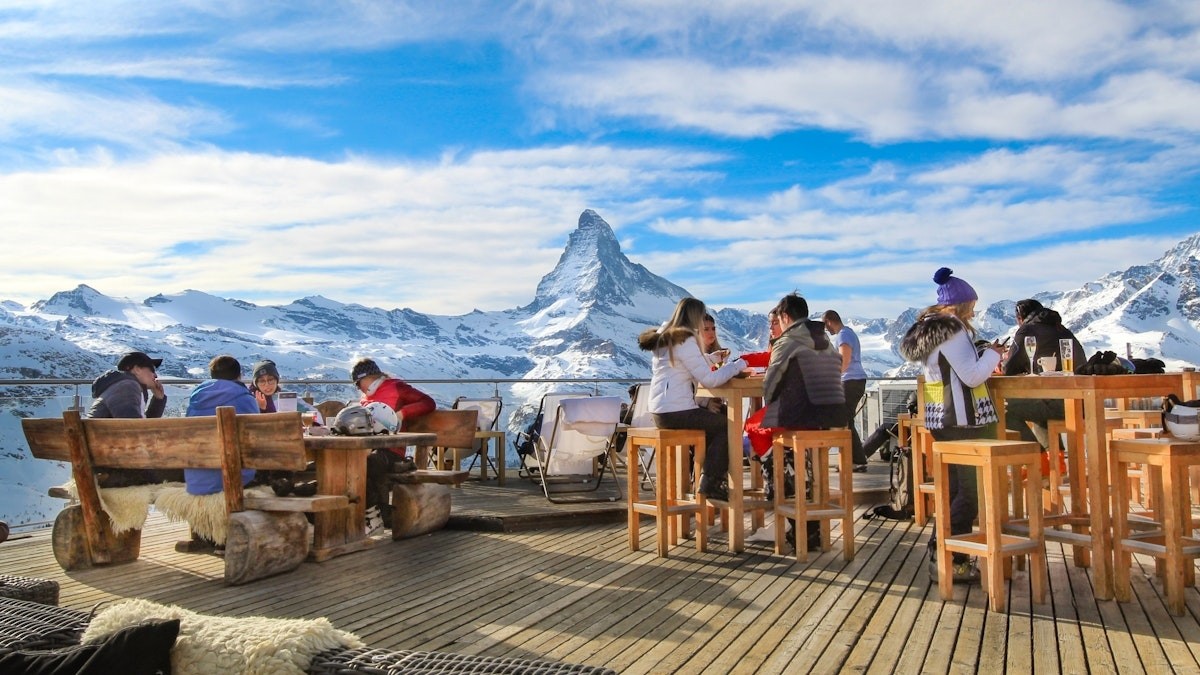
Nestled at the foot of the iconic Matterhorn, Zermatt is an idyllic mountain village that offers breathtaking views of the Alps. Whether you’re an avid skier or simply a lover of natural beauty, Zermatt has something for everyone. The car-free village exudes old-world charm, with its quaint chalets and cobblestone streets. In summer, the surrounding hiking trails are perfect for exploring alpine meadows, while in winter, the area transforms into a snowy wonderland.
Highlights:
- View of the iconic Matterhorn, one of the most famous mountains in the world.
- Car-free village atmosphere, offering a peaceful escape.
- Year-round skiing, snowboarding, and hiking opportunities.
- Access to the Gornergrat Railway for panoramic views of the Alps.
Key Facts:
- Location: Canton of Valais, Switzerland.
- Elevation: 1,620 meters (5,315 feet).
- Best visited: Year-round for skiing in winter, hiking in summer.
- Transportation: No cars allowed; accessible by train from Täsch.
02. Grindelwald: A Gateway to the Jungfrau Region:

Known as the “Glacier Village,” Grindelwald is a stunning hamlet located in the Bernese Oberland. Surrounded by towering peaks and pristine landscapes, it’s one of the most picturesque villages in Switzerland. Visitors can explore the surrounding hiking trails or take a cable car up to the First summit for panoramic views of the Jungfrau massif. Grindelwald is also the perfect base for exploring nearby attractions like the Jungfraujoch, the "Top of Europe."
Highlights:
- Jaw-dropping views of the Eiger, Mönch, and Jungfrau mountains.
- Access to adventure activities like hiking, mountaineering, and skiing.
- Scenic cable car rides to First and the First Cliff Walk.
- Proximity to the Jungfraujoch, "Top of Europe."
Key Facts:
- Location: Bernese Oberland, Canton of Bern.
- Elevation: 1,034 meters (3,392 feet).
- Best visited: June to September for hiking, December to March for skiing.
- Transportation: Reachable by train from Interlaken.
03. Lake Geneva and the Town of Montreux:
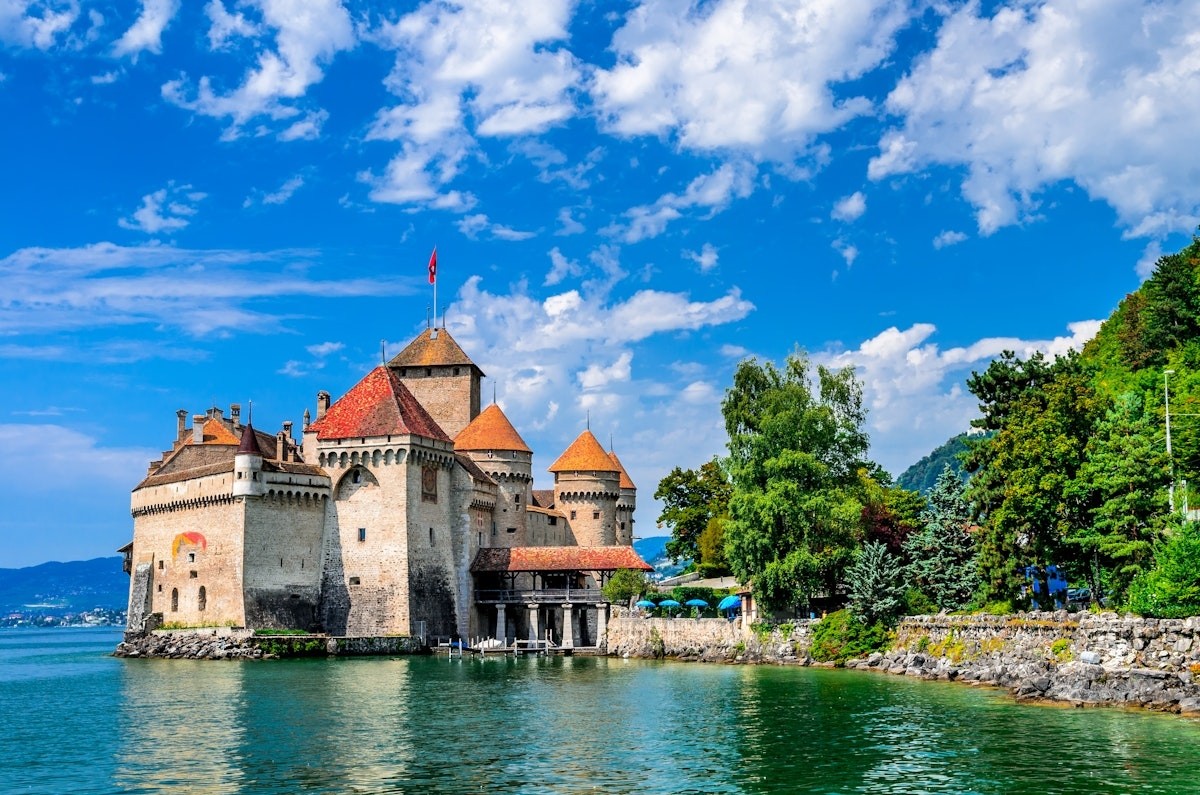
Lake Geneva, one of Europe’s largest lakes, is the perfect place to immerse yourself in natural beauty. The town of Montreux, located on the shores of the lake, is famous for its annual jazz festival, but it’s also a fantastic place to wander around year-round. The charming lakeside promenade, surrounded by vineyards, offers spectacular views of the Alps. Nearby, you can visit the famous Chillon Castle, a medieval fortress that sits right on the lake, offering a glimpse into Switzerland’s fascinating history.
Highlights:
- Picturesque lakeside promenade with views of the Alps.
- Montreux Jazz Festival, a world-famous music event.
- Chillon Castle, a medieval fortress on Lake Geneva's shore.
- Vineyards of Lavaux, a UNESCO World Heritage site.
Key Facts:
- Location: Border of Switzerland and France.
- Surface area: 580 square kilometers (224 square miles).
- Best visited: Year-round, especially for cultural festivals in summer.
- Transportation: Easily accessible by train from Lausanne or Geneva.
04. Lucerne: A Fairytale Town with a Modern Twist:
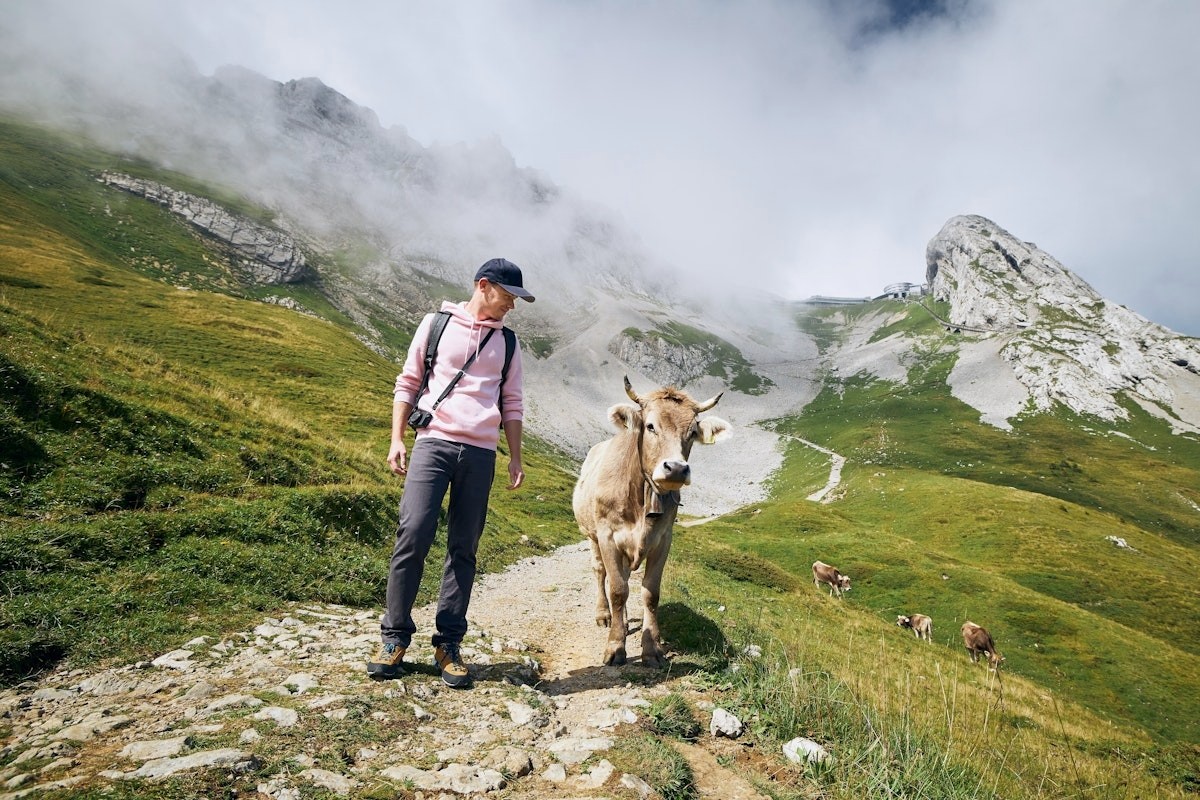
Lucerne is one of Switzerland's most enchanting cities, offering a mix of medieval charm and modern luxury. Known for its iconic wooden Chapel Bridge and Water Tower, Lucerne's picturesque Old Town is perfect for exploring on foot. The stunning lake and surrounding mountains make Lucerne a year-round destination. In the winter months, you can take a boat cruise on Lake Lucerne, while in the summer, the mountains surrounding the city offer some of the best hiking and outdoor activities in the region.
Highlights:
- The Chapel Bridge and Water Tower, Switzerland’s most photographed landmark.
- Scenic boat cruises on Lake Lucerne with views of Mount Pilatus and Mount Rigi.
- The Richard Wagner Museum located in the scenic lakeside Villa on Tribschen.
- Proximity to hiking and skiing destinations like Mount Pilatus and Rigi.
Key Facts:
- Location: Central Switzerland, in the canton of Lucerne.
- Population: Approximately 82,000 people.
- Best visited: Year-round; spring and summer for lake activities, winter for skiing.
- Transportation: Well connected by train, bus, and boat.
05. Lauterbrunnen: The Valley of 72 Waterfalls:
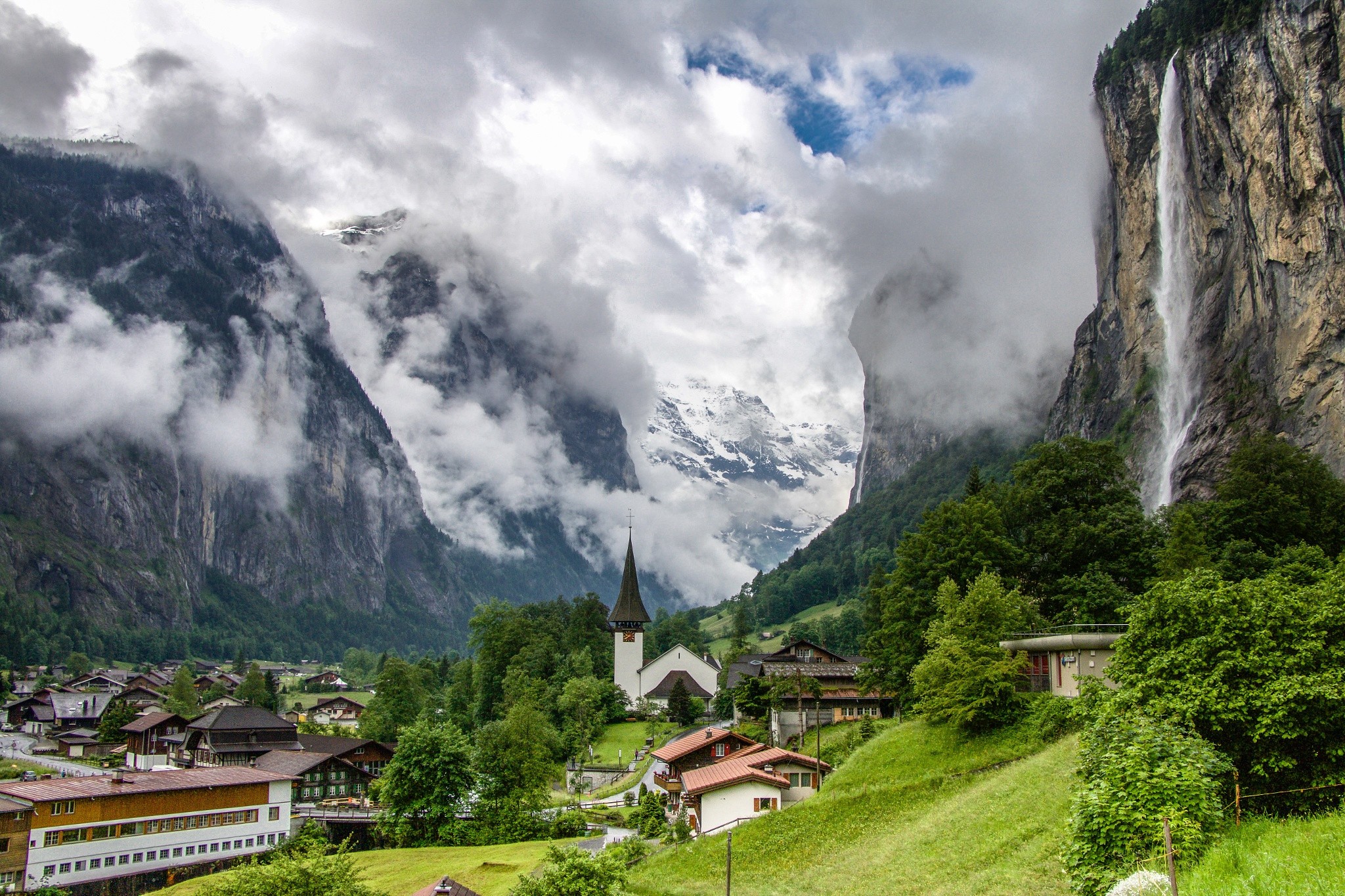
Lauterbrunnen is a hidden gem nestled in the heart of the Swiss Alps. This charming village is surrounded by towering cliffs and 72 stunning waterfalls that cascade down the mountainsides. Lauterbrunnen is the perfect place for nature lovers and outdoor enthusiasts, with a wide range of activities including hiking, paragliding, and exploring the nearby Jungfraujoch and Schilthorn peaks. The village’s idyllic beauty and peaceful atmosphere make it a perfect spot to unwind and reconnect with nature.
Highlights:
- 72 stunning waterfalls, including Staubbach Falls and Trümmelbach Falls.
- Access to hiking trails to Jungfraujoch and Schilthorn.
- A picturesque setting in a glacial valley surrounded by cliffs.
- The car-free village atmosphere offering a serene experience.
Key Facts:
- Location: Bernese Oberland, Canton of Bern.
- Elevation: 795 meters (2,608 feet).
- Best visited: June to September for hiking; winter for skiing.
- Transportation: Accessible by train from Interlaken.
06. Interlaken: A Thrill-Seeker’s Dream:
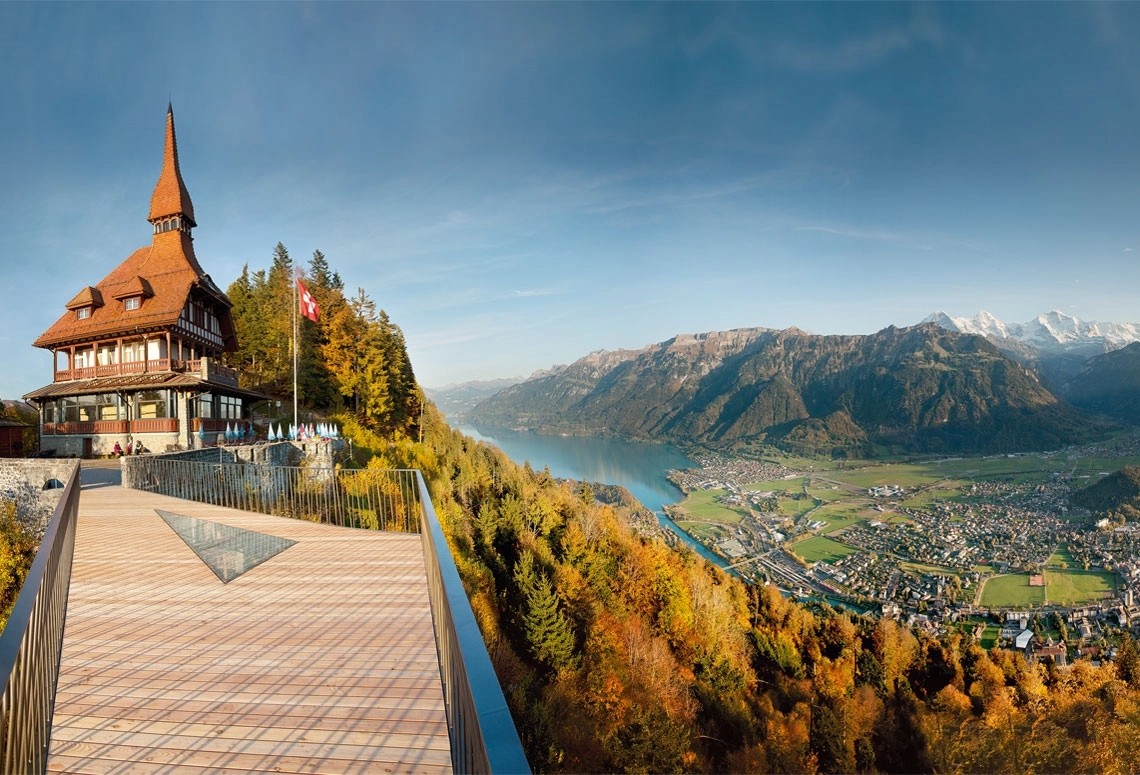
Situated between Lake Thun and Lake Brienz, Interlaken is a picturesque town surrounded by the towering Bernese Alps. The region is known for its adventure activities, including skydiving, paragliding, and canyoning. Interlaken’s charming streets are lined with colorful houses and boutique shops, while its location offers some of the best views of the surrounding mountains. Whether you’re seeking adrenaline-pumping experiences or simply want to relax by the lake, Interlaken has something for every traveler.
Highlights:
- A range of adventure sports including paragliding, skydiving, and canyoning.
- Beautiful lakeside setting between Lake Thun and Lake Brienz.
- Stunning views of the surrounding mountains, including the Eiger, Mönch, and Jungfrau.
- Outdoor activities like hiking, skiing, and boat tours.
Key Facts:
- Location: Bernese Oberland, Canton of Bern.
- Population: Around 5,500 people.
- Best visited: Year-round; winter for skiing, summer for outdoor adventure.
- Transportation: Easily accessible by train from Zurich or Bern.
07. Appenzell: A Step Back in Time:
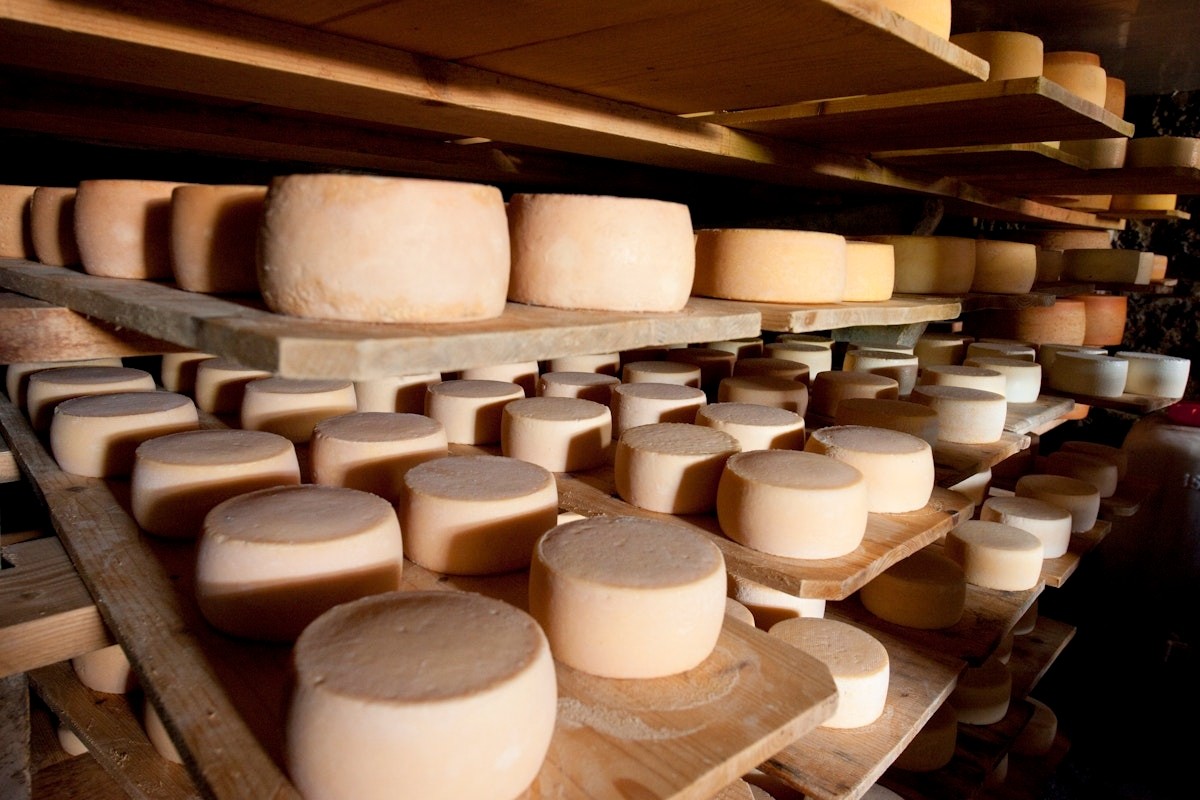
For a truly traditional Swiss experience, visit the village of Appenzell. Nestled between the rolling hills and pastures of eastern Switzerland, Appenzell is famous for its well-preserved rural traditions. The town’s colorful houses, cobblestone streets, and quaint shops make it feel like you’ve stepped back in time. Appenzell is also a gateway to the surrounding Alps, where visitors can hike, ski, or simply enjoy the stunning landscapes.
Highlights:
- A charming, traditional Swiss village with colorful houses and cobblestone streets.
- The perfect destination for hiking, cycling, and skiing in the nearby Alpstein mountains.
- Famous for its cheese, including the local Appenzeller cheese.
- Rich in Swiss traditions, with local customs still practiced today.
Key Facts:
- Location: Eastern Switzerland, Canton of Appenzell Innerrhoden.
- Elevation: 800 meters (2,625 feet).
- Best visited: Year-round for hiking and cultural experiences.
- Transportation: Accessible by train and bus from St. Gallen.
08. The Swiss National Park: A Wilderness Wonderland:
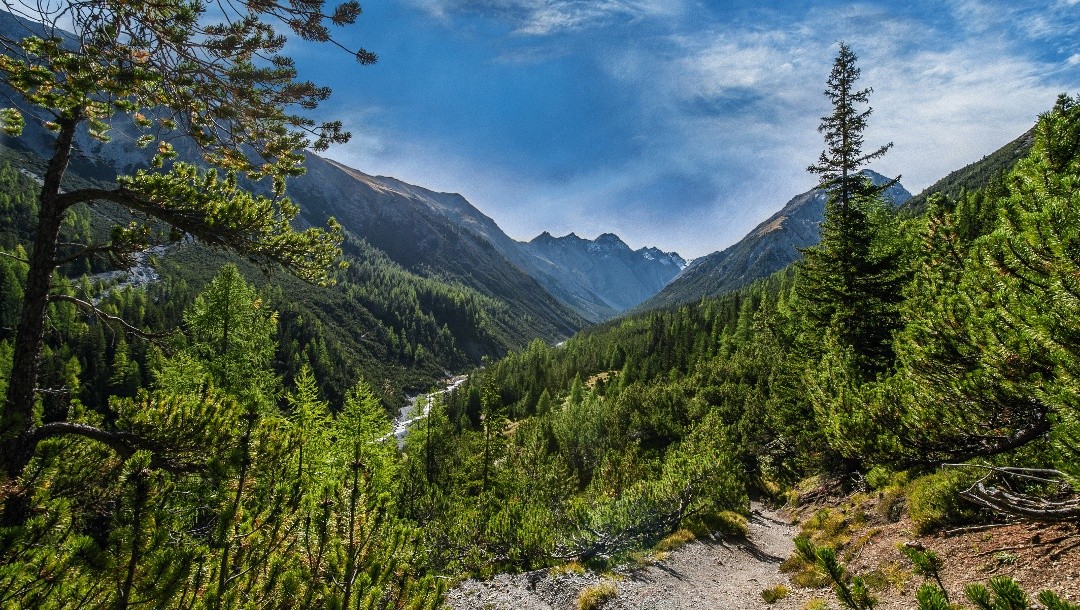
Located in the eastern part of Switzerland, the Swiss National Park is the country’s oldest and largest protected nature reserve. This wilderness wonderland is home to an array of wildlife, including ibex, marmots, and golden eagles. The park offers a variety of hiking trails, ranging from easy walks to more challenging treks, all surrounded by breathtaking alpine scenery. A visit to the Swiss National Park is a must for those seeking peace and solitude in the heart of nature.
Highlights:
- Switzerland’s oldest and largest national park, covering 68,000 acres.
- Home to diverse wildlife, including ibex, marmots, and golden eagles.
- A network of well-marked hiking trails that offer an up-close experience of alpine ecosystems.
- A haven for outdoor enthusiasts seeking a pristine natural environment.
Key Facts:
- Location: Eastern Swiss Alps, Canton of Graubünden.
- Established: 1914.
- Best visited: June to October for hiking, wildlife watching.
- Transportation: Accessible by train and bus from Zernez.
09. Lake Lucerne: A Scenic Cruise:
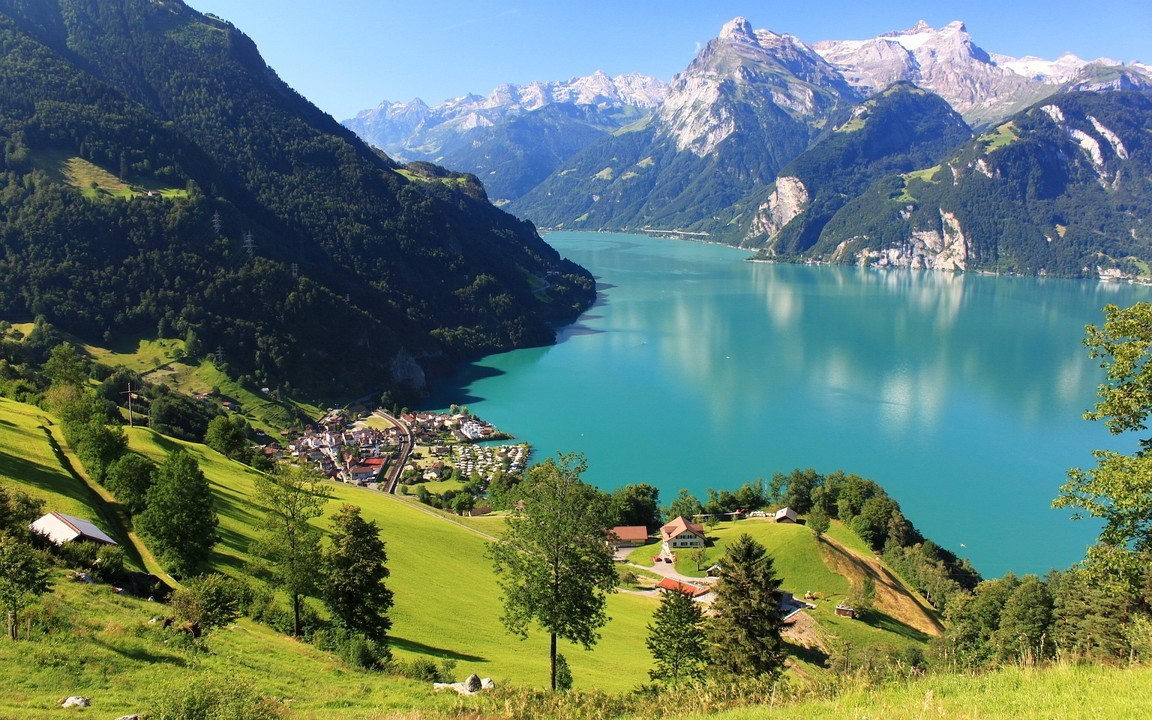
Lake Lucerne is surrounded by the stunning peaks of Mount Pilatus and Mount Rigi, making it one of the most scenic destinations in Switzerland. A boat cruise on Lake Lucerne is the perfect way to take in the stunning views, with the charming town of Weggis and the village of Vitznau offering some of the best views. The surrounding villages and mountains are perfect for exploring on foot or by bike.
Highlights:
- Stunning panoramic views of Mount Pilatus, Mount Rigi, and surrounding peaks.
- Boat cruises that take you around the lake, stopping at charming lakeside villages.
- Access to hiking and skiing opportunities on the surrounding mountains.
- The quaint town of Weggis, known for its scenic beauty.
Key Facts:
- Location: Central Switzerland, in the canton of Lucerne.
- Surface area: 114 square kilometers (44 square miles).
- Best visited: Year-round for boat cruises, spring and summer for hiking.
10. Murren: A Mountain Village with Breathtaking Views:
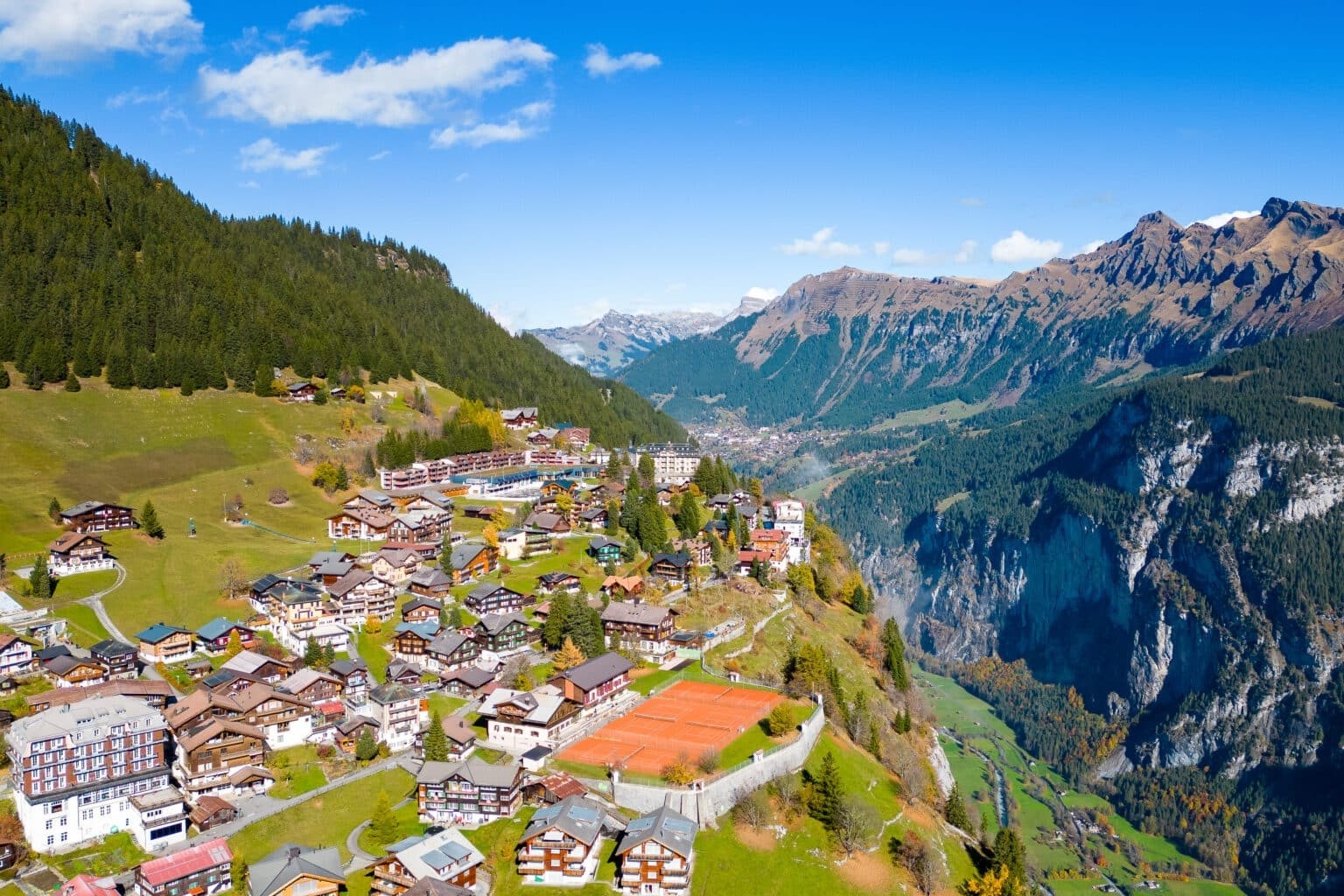
Situated high in the Bernese Oberland, Murren is a peaceful mountain village that offers some of the most breathtaking views of the Eiger, Mönch, and Jungfrau peaks. The village is car-free, adding to its charm and tranquility. Whether you’re hiking in the summer or skiing in the winter, Murren is the perfect place to disconnect from the hustle and bustle of everyday life and immerse yourself in the beauty of the Swiss Alps.
Highlights:
- Car-free village offering unparalleled views of the Eiger, Mönch, and Jungfrau mountains.
- A base for skiing in winter and hiking in summer.
- The thrilling Schilthorn Piz Gloria, a revolving restaurant featured in James Bond’s On Her Majesty's Secret Service.
- Access to the famous Jungfrau region, including Jungfraujoch.
Key Facts:
- Location: Bernese Oberland, Canton of Bern.
- Elevation: 1,650 meters (5,413 feet).
- Best visited: Year-round; winter for skiing, summer for hiking.
- Transportation: Reachable by cable car from Lauterbrunnen.
Travel Tips to Follow while Visiting Switzerland:
Switzerland offers breathtaking landscapes, rich culture, and a variety of activities. To make the most of your visit, consider the following travel tips:
- Budgeting: Switzerland is known for its high living costs. To manage expenses:
- Accommodation: Opt for hostels, guesthouses, or Airbnb for more affordable stays.
- Dining: Purchase groceries from supermarkets like Migros or Coop and prepare your meals. Eating out can be expensive.
- Transportation: Consider the Swiss Travel Pass for unlimited travel on trains, buses, and boats. It also grants free or discounted entry to many museums.
- Transportation:
- Public Transit: Switzerland boasts an efficient and punctual public transportation system. Trains, buses, and boats are well-connected, making it easy to explore the country.
- Driving: While renting a car offers flexibility, be aware of high fuel prices and parking fees. Additionally, some areas require a motorway vignette (toll sticker).
- Public Transit: Switzerland boasts an efficient and punctual public transportation system. Trains, buses, and boats are well-connected, making it easy to explore the country.
- Language: Switzerland has four official languages: German, French, Italian, and Romansh. In tourist areas, English is widely spoken. Learning basic phrases in the local language can enhance your experience.
- Currency: The official currency is the Swiss Franc (CHF). Credit cards are widely accepted, but it's advisable to carry some cash, especially in more remote areas.
- Safety: Switzerland is one of the safest countries to visit. However, always stay vigilant in crowded places and secure your belongings.
- Electrical Adapters: Switzerland uses Type J electrical outlets. Ensure you have the appropriate adapter for your devices.
- Tipping: Service charges are typically included in bills. While tipping isn't mandatory, rounding up the bill or leaving a small amount is appreciated for good service.
- Health and Safety:
- Hiking: Always inform someone about your hiking plans and expected return time. Carry a map and a fully charged phone.
- Emergency Number: In case of emergencies, dial 1414 for Rega, Switzerland’s air rescue service.
- Hiking: Always inform someone about your hiking plans and expected return time. Carry a map and a fully charged phone.
- Cultural Etiquette:
- Punctuality: Swiss culture values punctuality. Always be on time for appointments and public transportation.
- Quiet Hours: Observe quiet hours in residential areas, typically between 10 PM and 6 AM.
By keeping these tips in mind, you'll be well-prepared to enjoy all that Switzerland has to offer.
What To Do & Best Time to Visit in Switzerland:
Switzerland offers a diverse array of activities throughout the year, each season bringing its own unique experiences. Here's a guide to help you plan your visit:
Best Time to Visit in Switzerland::
- Summer (June to August): Ideal for hiking, biking, and exploring the outdoors. The weather is warm, and many cultural festivals take place during this period. However, it's also the peak tourist season, so expect larger crowds and higher prices.
- Autumn (September to October): A quieter time with fewer tourists. The landscapes are adorned with vibrant fall colors, and it's an excellent period for hiking and wine tasting. Some mountain lifts may close in October, so check ahead.
- Winter (December to February): Perfect for skiing, snowboarding, and enjoying festive Christmas markets. The Swiss Alps are renowned for their winter sports, attracting enthusiasts worldwide. Be prepared for cold temperatures and potential snowstorms.
- Spring (March to May): A transitional period with blooming flowers and milder weather. It's a great time for sightseeing and enjoying the outdoors without the summer crowds. However, some mountain resorts may still be closed, and the weather can be unpredictable.
Top Activities to Enjoy in Switzerland::
- Hiking and Outdoor Exploration: Switzerland boasts numerous trails suitable for all levels. Popular routes include the William Tell Trail and the Haute Route.
- Skiing and Snowboarding: The Swiss Alps offer world-class ski resorts such as Zermatt, St. Moritz, and Verbier. Whether you're a beginner or an expert, there's a slope for everyone.
- Cultural Festivals: Experience Swiss traditions through events like the Fasnacht carnival in spring and the Swiss National Day celebrations on August 1.
- City Exploration: Cities like Zurich, Geneva, and Lucerne offer rich history, museums, and vibrant culinary scenes. Geneva, for instance, is known for its international ambiance and landmarks like the Jet d’Eau fountain.
- Lake Activities: Switzerland's pristine lakes, such as Lake Geneva and Lake Lucerne, are perfect for boat tours, swimming, and relaxation.
Switzerland is a land of fairytales, with its picturesque villages, turquoise lakes, and majestic mountains offering endless beauty and adventure. Whether you're seeking outdoor activities, historical exploration, or simply a peaceful retreat in nature, these storybook destinations will leave you awe-struck. So pack your bags and get ready to explore some of the most beautiful places Switzerland has to offer!
Frequently Asked Questions (FAQs):
01. Question: What is the best time to visit Switzerland?
The best time to visit Switzerland depends on your preferences. For skiing and winter sports, visit between December and March. For hiking and outdoor activities, the summer months (June to September) offer ideal conditions. Spring and autumn are great for avoiding the crowds while enjoying pleasant weather and stunning landscapes.
02. Question: Do I need a visa to visit Switzerland?
Visitors from many countries can enter Switzerland without a visa for stays of up to 90 days within a 180-day period, thanks to the Schengen Agreement. However, it's always a good idea to check the specific entry requirements for your country before traveling.
03. Question: What are the top tourist attractions in Switzerland?
Switzerland offers a wealth of must-see attractions. Some of the top spots include the Matterhorn in Zermatt, Lake Geneva, the Jungfraujoch (Top of Europe), the charming villages of Grindelwald and Lauterbrunnen, and the beautiful Swiss National Park. Don't miss the iconic Chapel Bridge in Lucerne and the medieval Chillon Castle on Lake Geneva!
04. Question: Is Switzerland expensive to visit?
Switzerland is known for being one of the more expensive destinations in Europe. However, there are ways to save money, such as purchasing a Swiss Travel Pass for unlimited travel on public transport or dining at local eateries rather than upscale restaurants. Planning your visit during the off-season can also help lower costs.
05. Question: How do I get around Switzerland?
Switzerland has an efficient and extensive public transportation system, including trains, buses, and boats that connect major cities, towns, and attractions. The Swiss Travel Pass offers unlimited travel on the country’s public transport network. You can also use mountain railways and cable cars to explore the Alps.
06. Question: What are some unique Swiss foods to try?
Switzerland is famous for its cheese and chocolate! Be sure to try fondue (melted cheese served with bread), raclette (melted cheese over potatoes and vegetables), and rösti (crispy fried potatoes). Don’t miss out on Swiss chocolate, which is world-renowned. Swiss watches and handicrafts also make great souvenirs!
07. Question: Can I visit Switzerland without speaking German or French?
While German and French are the official languages in Switzerland, English is widely spoken, especially in tourist areas, hotels, and restaurants. Many Swiss people speak multiple languages, so you’ll find it easy to communicate in English.
08. Question: Are there family-friendly activities in Switzerland?
Absolutely! Switzerland is a great destination for families, offering activities such as boat rides on Lake Lucerne, visiting the Swiss Museum of Transport, and exploring the Swiss Alps. Many resorts and villages offer family-friendly accommodations and skiing lessons for children. The Swiss Adventure Park in Interlaken and the Lion Monument in Lucerne are also popular with kids.
09. Question: What should I pack for a trip to Switzerland?
Packing depends on the season and activities you plan to do. In winter, pack warm clothes, including a winter jacket, boots, and gloves for skiing or snowboarding. In summer, bring light clothing, a hat, and comfortable walking shoes for hiking and sightseeing. Always be prepared for changing weather in the mountains, especially if you plan to visit higher altitudes.
10. Question: What are the best hiking trails in Switzerland?
Switzerland is a hiker’s paradise! Some of the most famous trails include the Matterhorn Glacier Trail in Zermatt, the Eiger Trail in Grindelwald, and the panoramic views along the Rigi Trail near Lucerne. For more challenging hikes, the Swiss National Park offers a variety of beautiful trekking routes.
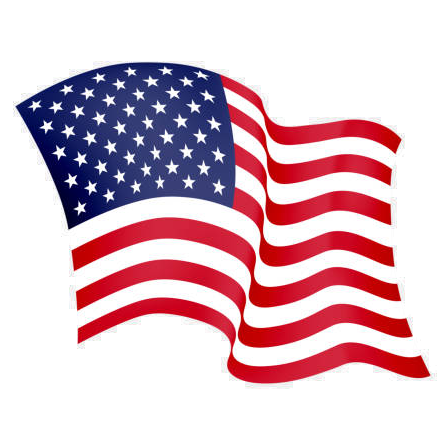


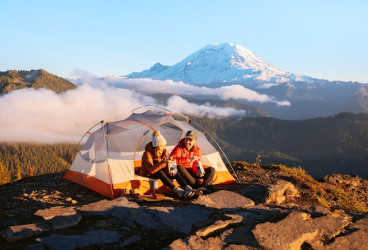
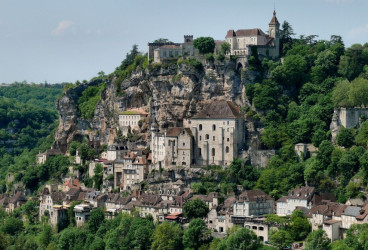







{{item.get_author.first_name}} {{item.get_author.last_name}}
Level 7
5 Photos
36 Reviews
{{item.comment_txt}}
{{item_reply.get_author.first_name}} {{item_reply.get_author.last_name}}
@ {{item_reply.reply_to}}, {{item_reply.reply_txt}}